When it comes to household allergens, dust and mold are two of the most common culprits. While they may seem similar at first glance, they actually have some fundamental differences that can impact your health and well-being. In this section, we will explore the dissimilarities between dust and mold, as well as the effects they can have on your health. We will also touch upon the allergies associated with both.
Understanding these differences is crucial for maintaining a healthy living environment, as well as preventing potential health issues caused by exposure to these allergens. So let’s dive into the world of dust and mold and discover what makes them unique.
What is Dust?
Dust is a combination of small particles of various substances, such as dirt, pollen, dander, and dead skin cells. These particles can accumulate quickly in indoor spaces and can be transported through the air, making it almost impossible to avoid. Dust is often visible on surfaces such as furniture, floors, and shelves.
Identifying the presence of dust in your home is relatively easy. If you notice a layer of dust settling on surfaces, or if you experience sneezing, itching, or coughing in certain rooms, it is likely that there is dust in the air.
What is Mold?
Mold is a type of fungus that grows in damp and humid environments. It can appear in various colors, including black, green, and white, and has a distinctive musty odor. Mold can grow on various surfaces, including walls, ceilings, and floors, as well as in appliances such as refrigerators and air conditioners.
It can reproduce through spores that spread easily in the air, making it challenging to eliminate. Exposure to mold can cause health problems, including allergic reactions, respiratory issues, and even infections in individuals with weakened immune systems.
Dust Allergies and Health Risks
While dust may seem like a harmless annoyance, it can pose serious health risks, particularly for individuals with allergies. Dust is composed of tiny particles from various sources, such as skin cells, pollen, and pet dander. When these particles are inhaled, they can trigger allergic reactions and aggravate respiratory conditions like asthma.
Common symptoms of dust allergies include sneezing, coughing, watery eyes, and a runny nose. In severe cases, dust exposure can also lead to the development of asthma and other long-term respiratory diseases.
To minimize the health risks associated with dust, it is important to control its accumulation in your living spaces. Regular cleaning, including vacuuming and dusting surfaces, can help reduce the amount of dust in your home. Additionally, investing in high-efficiency particulate air (HEPA) filters for your HVAC system can help trap dust particles and prevent them from circulating in the air.
Mold Allergies and Health Risks
Mold can pose significant health risks to individuals, particularly those with allergies or respiratory sensitivities. When mold spores are inhaled, they can trigger allergic reactions, such as sneezing, runny nose, and itchy eyes. In some cases, mold exposure can lead to more severe respiratory issues, including asthma attacks and lung infections.
People with weakened immune systems, such as those undergoing chemotherapy or with HIV/AIDS, are also at an increased risk of developing mold-related health issues.
Symptoms of Mold Allergies
Mold allergies can cause a range of symptoms, including:
- Sneezing
- Runny or stuffy nose
- Itchy or watery eyes
- Skin rash or hives
- Wheezing or difficulty breathing
If you experience any of these symptoms and suspect mold may be the cause, it’s essential to seek medical attention.
The Dangers of Black Mold
One type of mold that is particularly concerning is Stachybotrys chartarum, commonly known as black mold. This mold produces toxins that can cause serious health issues, ranging from respiratory problems to neurological symptoms and even death in rare cases.
Black mold requires professional removal, and it’s essential to take precautions to prevent its growth in the first place.
Differences Between Dust and Mold
While dust and mold are often considered together in terms of household allergens, they are fundamentally different. Here are the key differences between the two:
| Aspect | Dust | Mold |
|---|---|---|
| Appearance | Small, fine particles visible to the naked eye | Fuzzy, slimy, or powdery texture with various colors |
| Composition | Comprises of various organic and inorganic matter, including skin cells, pollen, and dirt | A type of fungus that grows in moist areas and reproduces through spores |
| Health Risks | Can trigger allergies, cause respiratory issues and aggravate existing conditions like asthma | Can cause allergic reactions and respiratory issues, as well as produce toxic substances that can be harmful if ingested or inhaled |
| Prevention | Regular cleaning and dust control measures like using air filters and vacuuming | Prevent moisture buildup, use dehumidifiers to lower humidity levels, and fix leaks or water damage |
It’s important to note that both dust and mold should be taken seriously and addressed promptly to prevent health risks. If you suspect mold or dust accumulation in your home, take the necessary steps to identify and eliminate the problem.
How to Identify and Combat Dust
Dust is a common household allergen that can cause respiratory issues and exacerbate existing allergies. Here are some tips for identifying and combatting dust in your home:
Identifying Dust
Dust can come from various sources such as clothing fibers, pet dander, and dead skin cells. It tends to accumulate in areas with poor ventilation and high traffic. To identify dust in your home, check for dusty surfaces, sneeze-inducing smells and visible particles in the air.
Cleaning Dust
Regular cleaning can significantly reduce the amount of dust in your home. Use microfiber cloths and vacuum cleaners with HEPA filters to capture dust particles. Clean surfaces frequently, including carpets, curtains, and bedding. Don’t forget to clean behind and under furniture, as well as on top of surfaces.
Controlling Dust
Controlling dust starts with eliminating its sources. Replace carpets with hard floors, wash bedding regularly, and cover heating and cooling vents with filters. Additionally, keep your home well-ventilated by opening windows or using air purifiers.
How to Identify and Combat Mold
Mold is a common household allergen that thrives in warm, humid environments. It often grows in bathrooms, kitchens, basements, and other damp places. Identifying mold in your home is crucial to preventing its spread and minimizing its health effects.
Identifying Mold:
| Signs of Mold Presence | What to Do |
|---|---|
| Visible mold growth on walls, ceilings, or floors | Remove the mold immediately using protective gear and proper cleaning solutions. Consider seeking professional help. |
| A strong, musty odor | Investigate the source of the smell and address any mold issues in the area. |
| Water stains or discoloration on surfaces | Inspect the area for mold growth and address any moisture problems, such as leaks or humidity issues. |
Removing Mold:
Removing mold from your home can be a challenging task, especially if it has already spread to multiple areas. Here are some tips for effective mold removal:
- Wear protective gear such as gloves, goggles, and an N-95 respirator mask to avoid inhaling mold spores.
- Ventilate the area by opening windows and running fans.
- Clean the affected area with a solution of 1-part bleach to 10-parts water, or a commercial mold removal product.
- Dry the area completely after cleaning to prevent any remaining mold spores from growing.
- Dispose of any moldy materials, such as paper or drywall, in sealed bags.
Preventing Mold:
Preventing mold growth in your home is essential to maintaining good indoor air quality and preventing health issues. Here are some tips for preventing mold:
- Ensure proper ventilation in bathrooms, kitchens, and other damp areas.
- Address any water leaks or moisture issues promptly.
- Use dehumidifiers to maintain a relative humidity level of 50% or lower.
- Clean and dry any water-damaged areas within 24 to 48 hours.
- Regularly clean and inspect air conditioning units, ducts, and filters.
By taking these precautions, you can minimize the risk of mold growth in your home and safeguard your health.
Tips for Preventing Dust and Mold
To minimize the risk of health problems associated with dust and mold, it is essential to take preventive measures to control their growth in your living spaces. Here are some useful tips to keep your home free of dust and mold:
- Keep your home clean and organized, and make sure to dust and vacuum regularly.
- Use a HEPA filter vacuum cleaner to prevent dust and mold spores from becoming airborne.
- Use an air purifier with a HEPA filter to improve indoor air quality.
- Ensure proper ventilation in your home by opening windows or using exhaust fans in areas prone to moisture, such as the bathroom and kitchen.
- Fix any leaks or water damage promptly to prevent mold growth.
- Control humidity levels in your home by using a dehumidifier if necessary.
- Regularly inspect areas that are prone to mold growth, such as the basement and laundry room, and take appropriate measures if mold is detected.
- Avoid using carpet in areas that are prone to moisture, such as the bathroom or basement.
- Wash bedding and linens regularly in hot water to kill dust mites and prevent dust accumulation.
- Use allergen-proof covers for pillows and mattresses to prevent dust accumulation.
By following these preventive measures, you can help reduce the risk of health problems caused by dust and mold in your home, and ensure a healthier living environment for you and your family.
The Impact of Dust and Mold on Indoor Air Quality
While both dust and mold are common household allergens, they also contribute to poor indoor air quality. Indoor air quality is an essential aspect of our health, and it can affect our comfort, productivity, and overall wellbeing.
Dust in the air can irritate our respiratory system, causing problems such as coughing, sneezing, and even asthma attacks. Long-term exposure to dust can also lead to the development of allergies and chronic respiratory illnesses.
Mold, on the other hand, can produce allergenic spores that can cause allergic reactions, respiratory problems, and other health issues. When mold is present in the air, it can worsen asthma symptoms and reduce lung function, particularly in individuals with existing respiratory conditions.
Both dust and mold can be serious health hazards, and it’s important to take steps to detect and eliminate them from our living spaces in order to maintain healthy indoor air quality.
Cleaning and Maintenance Tips for Dust and Mold
Keeping your home free of dust and mold requires regular cleaning and maintenance. Here are some tips to help you keep your living spaces healthy:
Cleaning Dust
To effectively clean dust, you should:
- Use a vacuum cleaner with a HEPA filter to trap dust particles.
- Dust surfaces with a microfiber cloth or electrostatic duster to avoid spreading dust in the air.
- Wash bedding and linens weekly in hot water to kill dust mites.
- Use an air purifier with a HEPA filter to reduce airborne dust particles.
- Regularly clean air vents and change air filters to prevent dust accumulation.
Cleaning Mold
If you notice mold growth in your home, follow these steps to clean it safely:
- Wear protective gear, including gloves, mask, and goggles, to avoid inhaling mold spores.
- Scrub moldy surfaces with a solution of water and detergent or vinegar.
- For larger mold infestations, consider hiring a professional mold removal service.
- Fix any leaks or water damage to prevent mold growth.
- Use a dehumidifier to reduce moisture levels in the air.
By following these cleaning and maintenance tips, you can help prevent the buildup of dust and the growth of mold in your home. A clean and healthy living space begins with regular upkeep.
FAQs About Dust and Mold
If you’ve read through this article and still have some burning questions about dust and mold, don’t worry! We’ve compiled some frequently asked questions and provided informative answers to help you better understand these household allergens.
Q: What is the best way to prevent the buildup of dust?
A: The most effective way to prevent dust buildup is to regularly clean and vacuum your home. Be sure to dust all surfaces, including furniture, shelves, and blinds, and use a vacuum with a HEPA filter to ensure the dust is properly trapped and removed from your home.
Q: Is all mold dangerous?
A: No, not all types of mold are dangerous. However, some types, such as black mold, can produce mycotoxins that can cause health problems in humans and animals. It’s important to identify and eliminate any mold growth in your home to prevent potential health risks.
Q: Can I clean mold myself, or do I need to hire a professional?
A: The answer depends on the extent of the mold growth and the severity of the problem. If the affected area is less than 10 square feet, you may be able to clean it yourself using a solution of bleach and water. However, if the mold covers a larger area or has infiltrated your HVAC system, it’s best to call in a professional mold remediation company to properly eliminate the problem.
Q: Can dust and mold cause health problems in pets?
A: Yes, just like humans, pets can experience health problems as a result of prolonged exposure to dust and mold. Symptoms can include coughing, sneezing, skin irritation, and respiratory issues. To keep your pets healthy, it’s important to maintain a clean and healthy living space.
Q: How often should I have my HVAC system inspected for mold growth?
A: It’s recommended to have your HVAC system inspected at least once a year for mold growth. If you notice any musty odors or signs of mold, such as visible growth or discolored areas near vents or air ducts, it’s important to have it inspected and cleaned as soon as possible to prevent health risks.
Q: Are there any natural remedies for combating dust and mold?
A: Yes, there are some natural remedies that can help combat dust and mold. For dust, try using natural air filters, such as houseplants or Himalayan salt lamps, or using a vinegar and water solution to clean surfaces. For mold, tea tree oil and grapefruit seed extract are natural solutions that can help eliminate mold growth.
Remember, proper cleaning and maintenance is key to keeping your home free of dust and mold and maintaining a healthy living environment.








